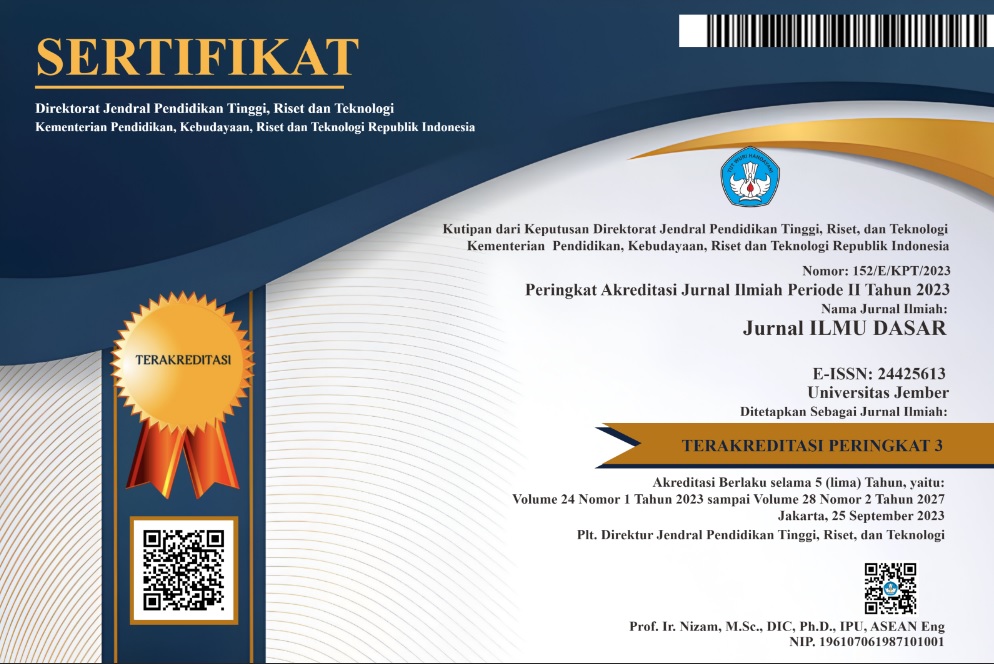Implementation of Discrete Time Markov Chain Method to Estimate The Transition of Smartphone Brands Usage in Balikpapan
DOI:
https://doi.org/10.19184/jid.v24i2.34872Keywords:
Discrete time markov chain, market share, smartphoneAbstract
The increasingly rapid competition in the industrial world today encourages all companies to be able to compete by prioritizing the products they offer, one of which is smartphones. Indonesia is one of the countries with the largest smartphone market share in Asia, with the number of active smartphone users in Indonesia reaching 177 million people in 2021 according to data released by the Statista research institute in March 2022. With these conditions, many smartphone companies always follow the direction of development of sophisticated communication technology media and offer a variety of complete and attractive facilities to encourage people to buy these products. One method that can be used to model this uncertainty is Discrete Time Markov chain which can be implemented as a tool for decision making and predicting future events. Therefore, this study was conducted to know the shifting pattern of smartphone use by consumers and predict the shift in smartphone market share for the coming period. The results of the study found that the steady state or equilibrium condition was achieved in the 10th period or in 2032 with the steady state percentage of each brand, namely Samsung = 22.49%, Oppo = 20.82 %, Xiaomi = 17.01%, Realme = 11.54%, Vivo = 11.41%, Apple = 10.27%, and other brands = 6.46%. The increase in market share is predicted to occur in the Oppo, Realme, and Vivo brands, while the decrease in market share will occur in the Apple, Samsung, Xiaomi and other brands.
Downloads
References
Kulkarni & Vidyahar G. 2011. Introduction to Modeling and Analysis of Stochastic Systems. Springer: New York.
Rangkuti F. 2002. The Power of Brand. Teknik Mengelola Brand Equity dan Strategi Pengembangan Merek. Jakarta: Gramedia Pustaka Utama.
Mandias GF. 2017. Analisis Pengaruh Pemanfaatan Smartphone Terhadap Prestasi Akademik Mahasiswa Fakultas Ilmu Komputer Universitas Klabat. Cogito Journal. 3(1): 83-90.
Nurhamiddin FdN. 2021. Analisis Perpindahan Penggunaan Merek Handphone Dikalangan Mahasiswa dengan Rantai Markov (Studi Kasus pada Mahasiswa UMMU Ternate Tahun 2017). Jurnal BIOSAINTEK. 3(2): 20-31.
Abdurahman, E., 1999. Konsep Dasar Markov Chain serta Kemungkinan Penerapannya di Bidang Pertanian. Jurnal Informatika Pertania, Volume 8, pp. 499 - 504.
He Z & Jiang W. 2017. A New Belief Markov Chain Model and Its Application in Inventory Prediction. International Journal of Production Research. 56(8).
Umar H. 2004. Metode Penelitian untuk Skripsi dan Tesis Bisnis. Cetakan ke-6. Jakarta: PT Raja Grafindo Persada.
Sugiyono. 2013. Metode Penelitian Kuantitatif, Kualitatif dan R&D. Bandung: Alfabeta.CV
Ihsan H, Sanusi W & Hasriani. 2019 Peramalan Pola Curah Hujan di Kota Makassar Menggunakan Model Rantai Markov. Journal of Mathematics, Computations, and Statistics. 2: 19-30.
Purba KF, Sihombing L & Salmiah. 2013. Estimasi Pangsa Pasar dari Berbagai Jenis Produk Mie Instan dengan Menggunakan Rantai Markov di Kota Medan. Journal of Agriculture and Agribusiness Socioeconomics. 2(1): 15357.
Latifah S & Astuti YP. 2021. Penerapan Rantai Markov dalam Menganalisis Persaingan Jasa Pengiriman Barang (Ekspedisi). Jurnal Ilmiah Matematika. 9: 3.
Masuku FN, Langi YAR & Mongi C. 2018. Analisis Rantai Markov untuk Memprediksi Perpindahan Konsumen Maskapai Penerbangan Rute Manado-Jakarta. Jurnal Ilmiah Sains. 18(2): 75-79.
He Z & Jiang W. 2017. A New Belief Markov Chain Model and Its Application in Inventory Prediction. International Journal of Production Research.
Novalina M. 2007. Kajian Peluang Steady State pada Rantai Markov. [Skripsi]. Fakultas Matematika dan Ilmu Pengetahuan Alam Universitas Sumatera Utara, Medan.








